Inside the Birth of the PTO and Beyond
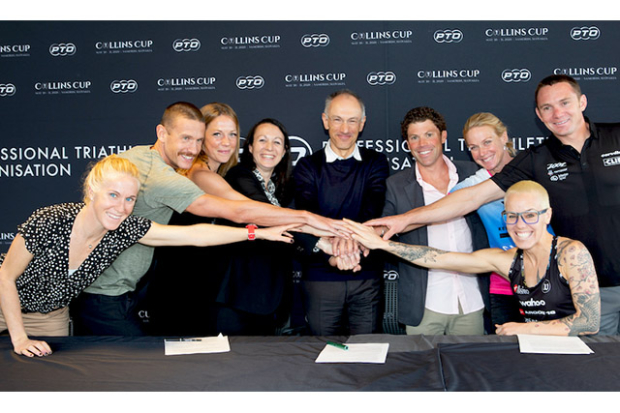
In Part I of our series on the Professional Triathletes Organization (PTO), we took a look at some of the actions the PTO has taken and the barriers that exist to their potential success.
Here, PTO Chairman Charles Adamo took our questions on the organization's structure, the investor behind the scenes, and much more.
Slowtwitch: What is the structure of PTO?
Charles Adamo: PTO operates as a non-profit organization, much like the Professional Golfers Association. The commercial enterprises of the PTO, like the Collins Cup, are operated under a commercial entity with the triathletes of PTO retaining 50% ownership and Crankstart Investments, our financial partner, retaining 50% ownership.
ST: What are the benefits of your unique structure?
Charles: We are a hybrid of a not-for-profit operation while at the same time we support our community of triathlon professionals. We don't need to take every last cent for ownership, and this allows us to support the greater triathlon community.
ST: Who is Mike Moritz and what is his investment record?
Charles: Moritz began his investing career at Sequoia Capital, where he rose to Chairman. He was one of the first investors in Google, PayPal and YouTube. At Sequoia, Moritz built a successful career making very long-term investment decisions in highly disruptive companies and in people who were “defiant outsiders and independent thinkers.” He is working with PTO through his personal investment vehicle, Crankstart Investments. Following his playbook, the PTO's success will not be measured by immediate profits, but by answers to questions like: Are we building an audience? Are we telling stories with emotional impact? Are existing triathlon fans engaging with what we are trying to put on? Are we expanding the fan base beyond the typical triathlete to those interested in the human drama of sport?
ST: Why did the PTO's immediate predecessor, the PTU, fail?
Charles: It didn’t really fail but was the genesis of what became the PTO, so in reality was a success. The original professionals who got together to form the PTU in 2015 included Jodie Swallow, Rachel Joyce, Helle Frederiksen, Mirinda Carfrae, Meredith Kessler, Mary Beth Ellis, Angela Naeth and Sebastian Kienle, Pete Jacobs, Dirk Bockel, Dylan McNiece, Timothy O’Donnell, James Cunnama, Andreas Dreitz and Scott DeFilippis. The athletes were keen to see how best to grow the sport, but given their geographical dispersed locations and limited time availability, it was difficult to get traction. So the organization seemed to fizzle a bit. It was kept alive by a small number of athletes – Rachel Joyce, Scott DeFilippis, Mirinda Carfrae, Meredith Kessler, Dylan McNiece, Tim O’Donnell and Sarah Piampiano, who continued to volunteer their time. In 2016 I started to provide some guidance and together we tried to figure a way for the PTO to become an economic reality.
ST: What was the tipping point?
Charles: It took four years of head scratching to get the PTO off the ground. Some said it would never happen and that it was impossible to get a bunch of self-driven individual professional triathletes join a single organization – or agree on anything. People told us that it’s all been tried before and we were wasting our time. Thankfully, we were blessed with advisors from outside the sport who told us otherwise.
ST: Will you be paying your PTO pro triathlete board members?
Charles: Our current pro triathlete board members include Alistair Brownlee, Tim O’Donnell, Lionel Sanders, Scott Defilippis, Dylan McNeice as well as Rachel Joyce, Mirinda Carfrae, Sarah Piampiano-Lord, Paula Findlay, Meredith Kessler and Skye Moench. No PTO member gets any compensation as an ambassador. Some are paid for admin work they do to help run the nuts and bolts of the organisation.
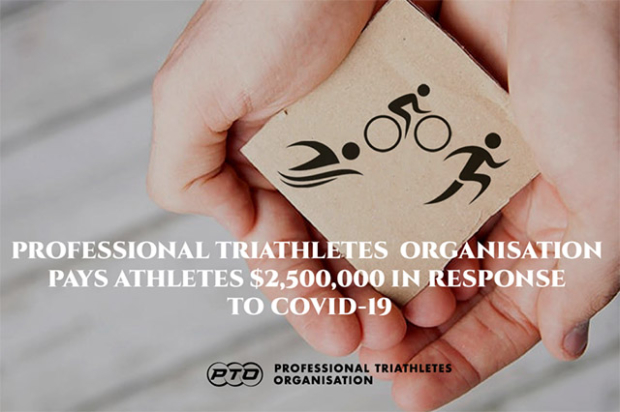
ST: Will you continue to offer a bonus of $2 million for the PTO season points payoff, and large purses for individual PTO events?
Charles: Yes. We have heard it argued that while IM and other organisers might not pay enough prize money to allow professional triathletes to earn much of a living, professionals should be grateful because they are getting exposure and a platform for their own promotions so they can cobble together some more income. We whole heartedly disagree with this argument.
In the PTO, your income is not based on your Q Rating, Instagram followers, or personality. We are happy if our athletes can enhance their income by these means. But we plan to offer enough prize money so athletes are paid well for their sporting achievements. We are a sport with the world’s greatest athletes, not a TV reality show.
ST: What is the difference between a celebrity and a serious athlete?
Charles: A perfect example was the UFC’s Ronda Rousey, who in 2015 was at the top of UFC and cashing in huge sums for swimsuit spreads and late-night TV show appearances. Until she walked into the Octagon against Holly Holmes, who KO’d Rousey in 59 seconds. Goodbye Ronda, who quickly changed careers to WWE, so she can be paid to be a personality.
ST: Where did you look first for a major partner?
Charles: We originally sought a partnership with a leading sports agency or broadcaster as investment partner. This is how many of the more commercialized sports became successful – starting with Mark McCormack of sports marketing powerhouse IMG who handled Wimbledon for decades. .
After spending time working on that model, we realised that we needed a long-term investor. We met with a number of well-known players within and outside sport. Given the fundamentals of the modern sports business, we felt access to capital would not be a huge concern, but access to the “right" capital was absolutely paramount.
ST: What business models intrigued your initial search?
Charles: Soon after I started helping the PTO, Frank and Lorenzo Fertitta sold the UFC for $4 billion, having bought it in 2001 for $2 million. I met with a number of the UFC advisors and eventually met with Lorenzo Fertitta. It is an amazing story because before the Fertittas came on the scene, the UFC was basically a spectacle where fans came to watch people beat each other up. Lorenzo saw the opportunity to make it a professional sport where fans cared about the rivalries and who was beating whom. At the time he bought the UFC, he was quoted as saying, “This is a professional sport, not a spectacle. What that means is we need to focus on the fighters. As much as I love the UFC brand, I understand that it is not about the UFC but about the athletes.” The UFC lost $40-50 million before it turned around. They invested heavily in broadcast production and promoting the fighters and the rivalries. The reason Conor McGregor is a household name is because the UFC invested millions of dollars in a promotion to get you to know the professionals. Prior to UFC’s promotion, Conor McGregor was a plumber in Dublin. So we see a similar model where we invest in broadcast and promoting our great professionals.
ST: What could the PTO take from the UFC?
Charles: I am not a fan of UFC. I think it is a bit barbaric. Although, when I am walking through the airport and it is on, you can’t take your eyes off it. But with triathlon there are rivalries and back stories that need promoting. It takes investment but if you are not willing to invest in the personalities, you are missing a crucial part of the picture.
ST: Doesn’t Ironman, the ITU, Super League and the Challenge Family hype their tri stars?
Charles: We think not very much. That is where the Fertittas said this is not about the UFC brand. The professionals make the brand, we need to promote them. Even the major sports like the NFL, MLB and the NBA invest in serious promotion to build audiences and keep them excited. Sports boom when superstars are promoted.
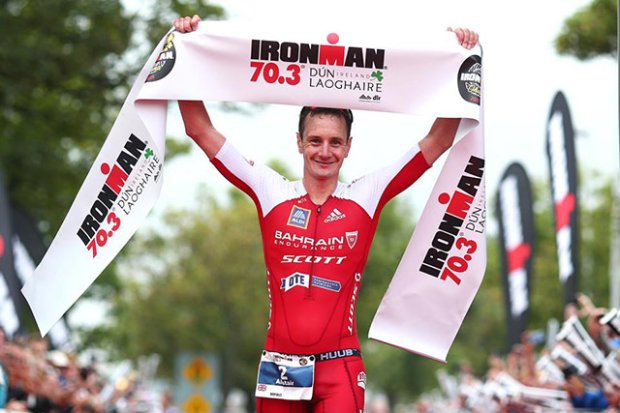
ST: How might you have promoted triathlon stars?
Charles: Well, a good example was when Alistair Brownlee entered Kona last year. You’d have thought there would be a huge promotion about a potential duel with Jan Frodeno. Jan won the 2008 Olympics and Alistair followed to become the first-two time Olympic gold medalist in triathlon. By 2014 Jan chose to go long and has won three Ironman World Championships and two Ironman 70.3 titles. In 2019, Alistair decided to enter Jan’s turf. That’s a great story, and suitable for a lot of background clips and promotion. Yet, when you watched the broadcast, there was no lead-up explaining the history. Even during the race, Alistair was third on the bike at one point when he had a flat tire. This was only noticed when a FB viewer commented that it looked like he had a different tire. There was a lot of missed drama.
ST: When did PTO decide that the worldwide pandemic made it impossible to hold the Collins Cup this year?
Charles: The decision to postpone The Collins Cup was made for us early on. Our biggest concern was to make sure we had a world-class broadcast product far above anything the sport has seen. To do this, we engaged several international vendors and suppliers who needed to travel to [the course at] Samorin [Slovakia] for the preparatory work. Once travel restrictions were imposed, we saw we could not provide the broadcast product we desired. So we sought to postpone that race and found a way to support the PTO professional triathletes economically.
ST: Why did PTO offer the total $2.5 million of its 2020 year-end bonus program immediately?
Charles: Actually, our year-end bonus program was $2,000,000. In the face of the pandemic and race cancellations, we increased it to $2,500,000 and paid it out immediately. The $500,000 increase was paid to men and women athletes ranked 21-100. We did it because it was the right thing to do. We announced our pay-out to PTO professional triathletes on March 18, even before the US Government adopted its expanded unemployment program. We were fast off the mark because even without a pandemic the economic lives of most professional triathletes are tenuous at best. With the pandemic, pro triathletes were effectively unemployed and many had little savings.
Perhaps Lionel Sanders said it best: “[the PTO payments] have allowed us to keep up with our training and not have to think ‘Oh my Gosh maybe I am going bankrupt and can’t keep focusing on triathlon.’”
ST: In the past, there have been triathlons which made a big splash with big payoffs to the winners: What have you learned from these predecessors?
Charles: While those large prize purses were commendable short-term efforts to grow the professional side of the sport, we have a financial partner whose investment modus vivendi is making long-term investments to create fundamental and lasting changes.
ST: All of these big money races tried to recoup investment with high-quality television coverage. That’s not enough on its own. What are your other revenue streams?
Charles: We are very fortunate in that technology has advanced substantially and the ability to reach an audience via the over-the-top (OTT) – streaming live video that appears on any screen (mobile, PC, TV, etc.). We are also able to invest significant amounts in higher production quality. This is difficult for organizations looking for short-term results. Many people have said that triathlon is "too long" on TV. But there are lots of long-format sports – such as Golf, Motorsport and Tour de France – that have proved they can create exciting content. But it takes considerable investment that we can make with Crankstart.
ST: What are examples of breakthrough technology in sports broadcasting?
Charles: There has not been a sport that has a broadcast platform that has not invested in technology to enhance the viewers’ experience. Whether it be tennis’ Hawkeye graphics and serve speeds, NFL instant replay and freeze frame, PGA shot tracer, ball speed and trajectory and green slopes. [And the 2013 America’s Cup sailing which set some new graphics and technical standards] The list evolves every year. Unfortunately, because of a lack of investment, triathlon broadcasts have been stuck with a helicopter and some motorbikes.
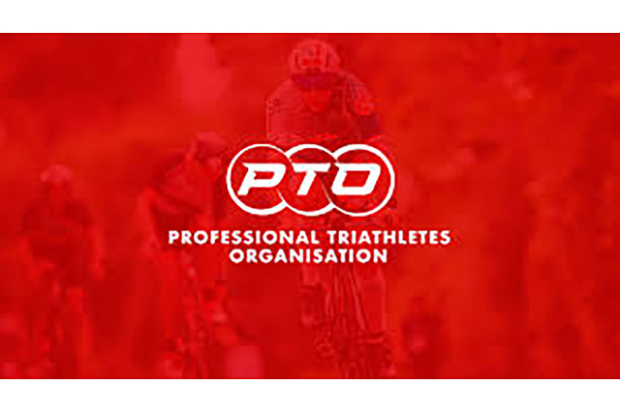
ST: Triathlon has a long history of a niche sport with a business model based primarily on age group entry income. Why did the PTO make a major investment in the competitors?
Charles: While the business model based on AG entry fees has managed to be useful for the organizers, we think it has not been healthy for the sport on a number of fronts.
First, depending on AG entry fees for the major part of economics has resulted in the entry fees reaching exorbitant amounts, which makes the sport more niche and less accessible to a broader audience.
Second, organisers have always looked to keep professional prize purses as low as possible. We understand it is a business for them. Yet, when you rely predominantly on AG entry fees and hedge fund investors are trying to show double digit growth in order to justify a billion-dollar valuation while servicing a large amount of high-interest debt, it puts an unhealthy stress on the enterprise. Finally, when they prepare for an exit sale, they look to cut expenses and raise prices.
It is not an accident that many professional sports have limits on the amount of debt an ownership group can have. They appreciate that excessive debt causes the business to be run in a way that exploits the fan base, destroys the quality of the product and poisons the goodwill of the sport.
For example, we note that the prize purse for the IM World Championship has not increased in a decade. We feel this itself is an embarrassment for the sport. The fact that two top professionals who had bike accidents at the same World Championship were aided by GoFundMe pages and charity donations to pay medical bills is shameful.
ST: How tough will it be to start recouping your initial investment?
Charles: We appreciate that in the triathlon world these early investments look big. But they are small in the world of international sports television. We believe pro triathletes are currently underpaid, so we won’t need to move the needle very much to enhance their lives. We are putting numbers out there to investors which surprise many in our sport, but those are small numbers compared to the sponsorships that support mid-range pro sports like women’s golf. In the world of modern televised sports, triathlon demographics are very attractive and can produce a good return on investment while significantly increasing the amount professionals can earn.
ST: There were a reported 2.1 million participants in triathlon in the U.S in 2019. Is that a big enough base?
Charles: It is a sizeable base. They are rabid fans but they have very little decent product to watch right now. Our goal is to increase the audience size by creating a superior broadcast product, promote the sport and its stars, and draw on cycling, running, swimming and related endurance enthusiasts as a bridge to regular sports fans who would be interested in the drama that triathlon can produce.
ST: How does the triathlon audience base compare in average age?
Charles: The average age for the PGA TV audience is 64. Our broadcast market audience age range is from 30 to 55. It is right it the sweet spot for high end sponsors.
ST: Why compare triathlon to the golf business model?
Charles: Because we share a similar ABC1 high-end audience demographic. The business of sport is all about delivering an audience. When we are able to deliver our audience through engaging broadcasts, we will then be able to tap into the non-endemic high-end sponsors/advertisers that golf does. We very conservatively look at women's golf, which has very modest audience numbers but can generate economics that far exceed those of triathlon right now. The LPGA has over $70 million of prize money during the season (compared to approximately $4.8 million for an IRONMAN season [and $1.2 million for the Challenge series]. An ordinary LPGA event has about a $2 million dollar purse, while the five LPGA major events have $5 million prize purses. To start, we don’t need very many events. If we get two or three races with $2 million dollar-plus prize purses – that would make those races appointment television – and we would be very pleased.
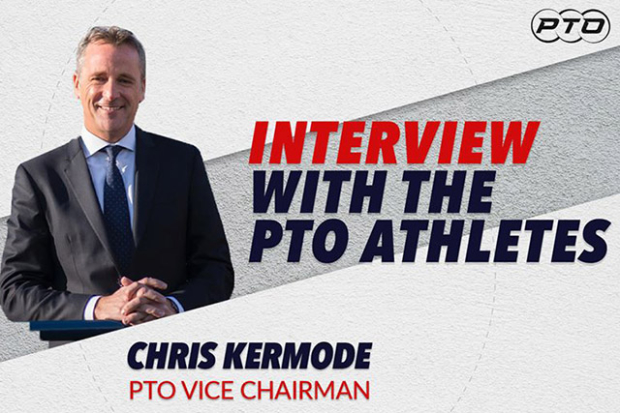
ST: Where will you find the outlets for your promotion of triathlon pros?
Charles: It takes time. If you read the Q&A with our new Vice Chairman Chris Kermode, former head of the Association of Tennis Professionals, we will do some things that tennis does. They invest year after year promoting the players. That is what we will be doing – putting out our own broadcasts, podcasts, live streaming and marketing and advertising to the task.
ST: Why was the Collins Cup set to be your first major offering?
Charles: We want our events to strike an emotional chord with our audience. We planned the Collins Cup because it gives us an opportunity for emotional interactions. Using the Ryder Cup format, which essentially turns staid golf into a blood sport, we can engage the patriotic emotions of our fans, and also allows them to experience interactions with the sport that do not happen in a single race. For example, the captains and the athletes are going to be mic’d. The captains will be talking to the athletes live on the bike and run. Backing up those charged conversations we will have data (heart rate, power ratings, cadence etc.) for all the matches and this can be communicated so athletes can react in real time to what their competitors are doing.
ST: How much cooperation will there be with Challenge and other series?
Charles: We are the newest member of the triathlon community and want to work with all groups. We have a great relationship with Challenge, the ITU and many of the national governing bodies and we are reaching out to everyone to make the space better. When Ironman cancelled the pro portion of IM Brazil while keeping the AG race, the PTO offered to pay the prize purse for the professionals. IM declined our offer. As a result, we made the same offer to Challenge who were happy to have the PTO increase the professional prize purse at their race in Brazil.
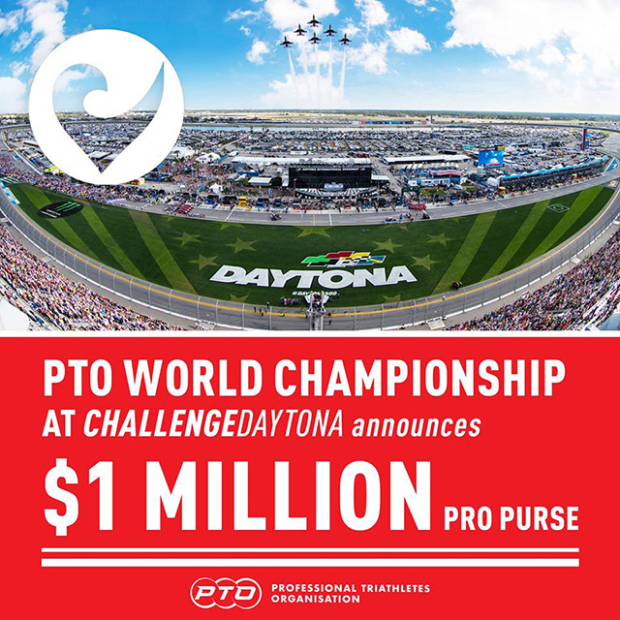
ST: With Ironman canceling their re-scheduled 2020 Ironman and Ironman 70.3 World Championships, what will you do about Challenge Daytona set for December?
Charles: If pandemic conditions improve, Challenge Daytona could have accommodated both the elite race broadcast and an age group competition. We are also very open to having an elite-only race, depending on the local authorities and our local partners. As for the Collins Cup, we are preparing for a great race in May 2021. Beyond that, the Covid-19 pandemic has opened a number of interesting conversations and clearly many people in and outside the sport recognise that our high quality broadcasts could bring tremendous value to their city or region. That said – Collins Cup is our focus and premier event.
ST: What is the long-range goal for an increased number of annual PTO races?
Charles: Our medium-term goal is to have a few major races, and work with other operators, and add to these a development series for up and coming professionals. We have a very long-term view of the sport, and believe that when professional athletes choose to act together good things happen.



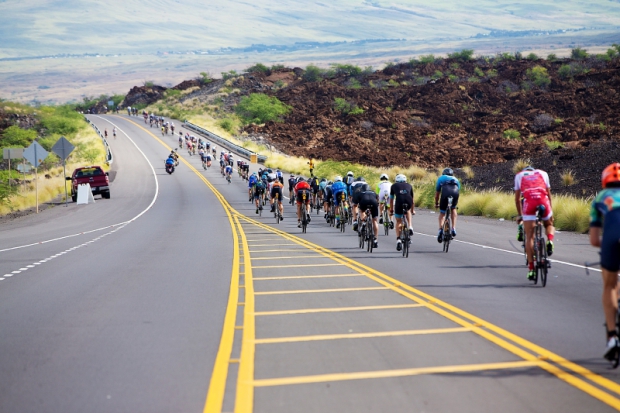
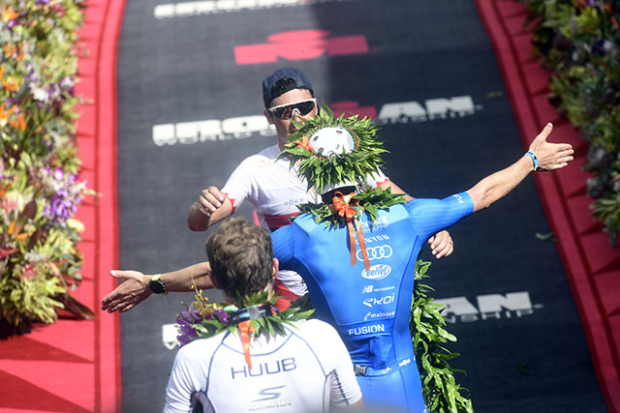
Start the discussion at slowtwitch.northend.network